What to know about bipolar II disorder
Bipolar II disorder involves periods of depression and periods of elevated mood, called hypomania. This is like mania but less extreme.
All forms of bipolar disorder involve shifts in mood and levels of energy and activity.
It causes hypomania, a period in which mood and behavior are elevated beyond what most people experience. In a state of hypomania, a person may feel elated, energized, or even irritable.
:max_bytes(150000):strip_icc()/bipolar-1-vs-bipolar-2-5205361_final-a20ec58641ed44ed82c7c7ba1d94bcd9.jpg)
Bipolar I causes mania, a more severely elevated mood than hypomania.
Experts introduced the term “bipolar II disorder” in 1994 to help doctors describe and treat the condition more effectively.
However, as scientists discover more about the condition, some have called for an end to the distinction between types I and II. They argue that it is more realistic to see bipolar disorder as a spectrum with a range of symptoms, patterns, and severities.
Choose from Better Help’s network of therapists for your disorder symptoms and stay supported by phone, video, or live chat sessions. Plans start at $60 per week and an additional 20% off your first month.
If you wanted to stay away from these types of Bipolar Disorders, get full knowledge about them with Pritish Kumar Halder.
Who Is at Risk for Bipolar II Disorder?
Virtually anyone can develop bipolar II disorder. About 2.5% of the U.S. population suffers from some form of bipolar disorder – nearly 6 million people.
How Is Bipolar II Disorder Different From Other Types of Bipolar Disorder?

People with bipolar I disorder experience full mania — a severe, abnormally elevated mood with erratic behavior. Manic symptoms lead to serious disruptions in life, causing legal or major personal problems.
In bipolar II disorder, the symptoms of elevated mood never reach full-blown mania. Hypomania in phase II is a milder form of mood elevation. However, the depressive episodes of bipolar II disorder are often longer-lasting and maybe even more severe than in bipolar I disorder. Therefore, bipolar II disorder is not simply a “milder” overall form of bipolar disorder.
Bipolar II vs. bipolar I
Counseling may help a person with bipolar II disorder develop coping strategies.
The main difference between bipolar I and II relates to the intensity of manic periods. However, the distinction is not clear-cut, according to researchers’ trusted Sources.
Below are diagnostic criteria for both types of the disorder:
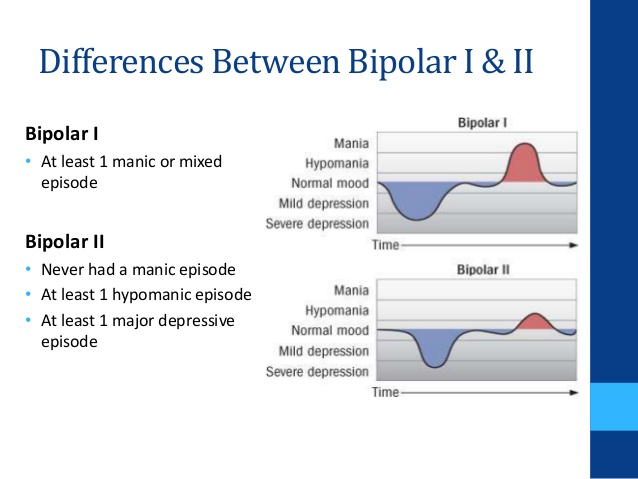
Bipolar I: A person will have at least one trusted Source manic episode, with or without an episode of depression. A manic episode may involve psychosis, which can include hallucinations or delusions. During mania, a person may need hospital care.
Bipolar II: A person will have at least one trusted Source depressive episode and at least one episode of hypomania, which does not involve psychosis. Depression is often the dominant mood.
According to some researchers trusted Sources, people with bipolar II are likely to have depression more than 50% of the time, while for those with bipolar I, depression is present for around 30% of the time.
Symptoms
Bipolar II is characterized by periods of hypomania followed by depressive episodes. However, the duration and severity of these episodes and the range of other symptoms can vary widely from person to person.

- Hypomania usually lasts a few days and can involve the following symptoms trusted Source:
- having more energy and self-confidence
- feeling more creative
- being more sociable, flirtatious, or sexually active
- faster thoughts and quicker actions
- getting distracted more easily
- irritability
- talking faster and more than usual
- engaging in risky behavior, such as spending or getting into arguments
- drinking more coffee or alcohol
- smoking more or taking more drugs
A person with hypomania may feel good and function well-trusted Source, but others may notice that their behavior is unusual. After feeling good, there is a risk that a depressive episode will follow.
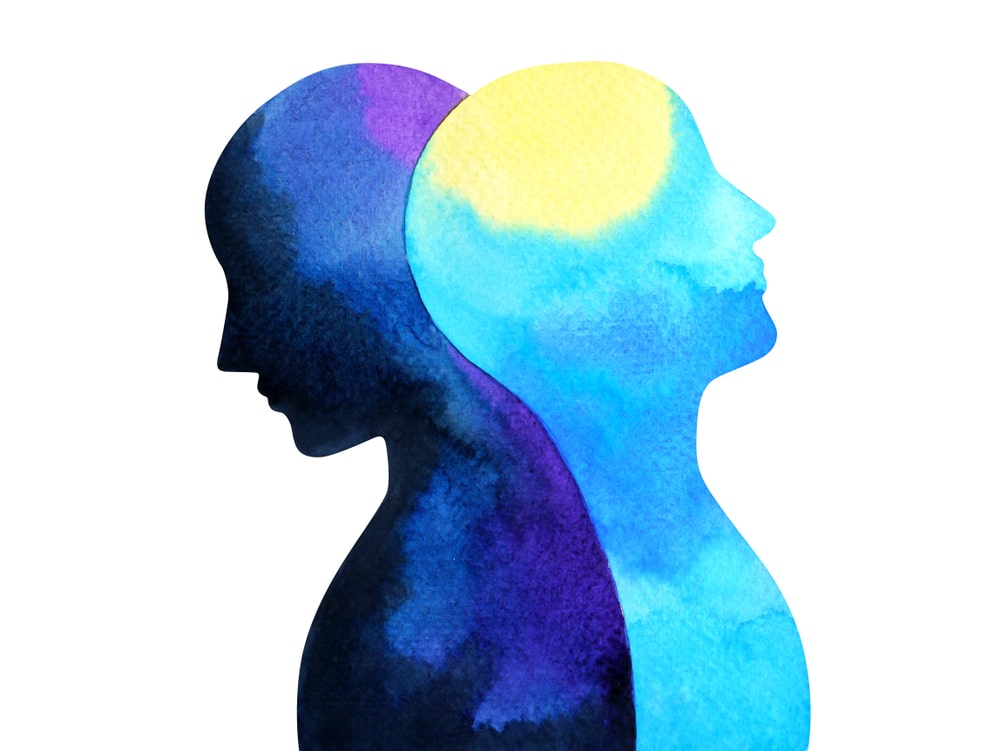
Symptoms of a depressive episode can include:
- feeling sad, empty, or hopeless
- getting low motivation
- losing interest in activities
- sleeping too much or too little
- having low energy levels
- feelings of worthlessness and guilt
- trouble focusing
- gaining or losing weight without trying
- having suicidal thoughts or tendencies
The symptoms tend to appear in early adulthood, but the disorder can develop in children and, more often, teens.
Find out more about the symptoms of bipolar disorder.
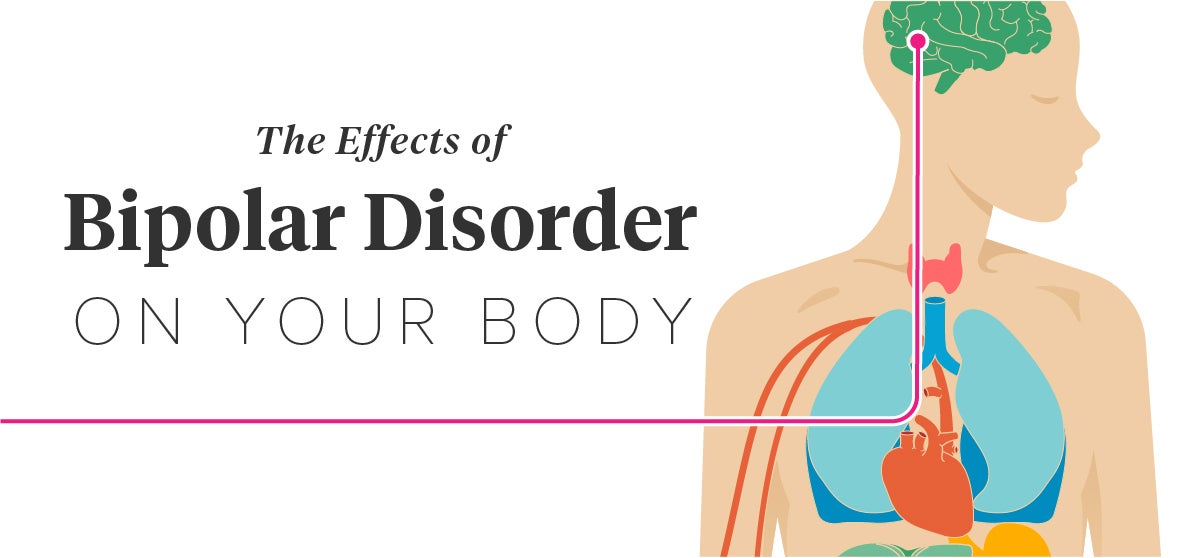
- Causes and risk factors
- Doctors do not know exactly what causes trusted Source bipolar disorder, but the following may play a role:
- a variety of genetic factors
- environmental factors
- structural features in the brain
Bipolar disorder is more likely to develop in a person with a close relative who has it.
Also, stress and traumatic events can contribute to triggering the condition in a person with a genetic predisposition.
According to the National Institute of Mental Health, symptoms may appear for the first time during pregnancy or after childbirth.
Diagnosis
For a diagnosis of bipolar II, a person will need to have had at least one episode of depression and at least one hypomanic episode.
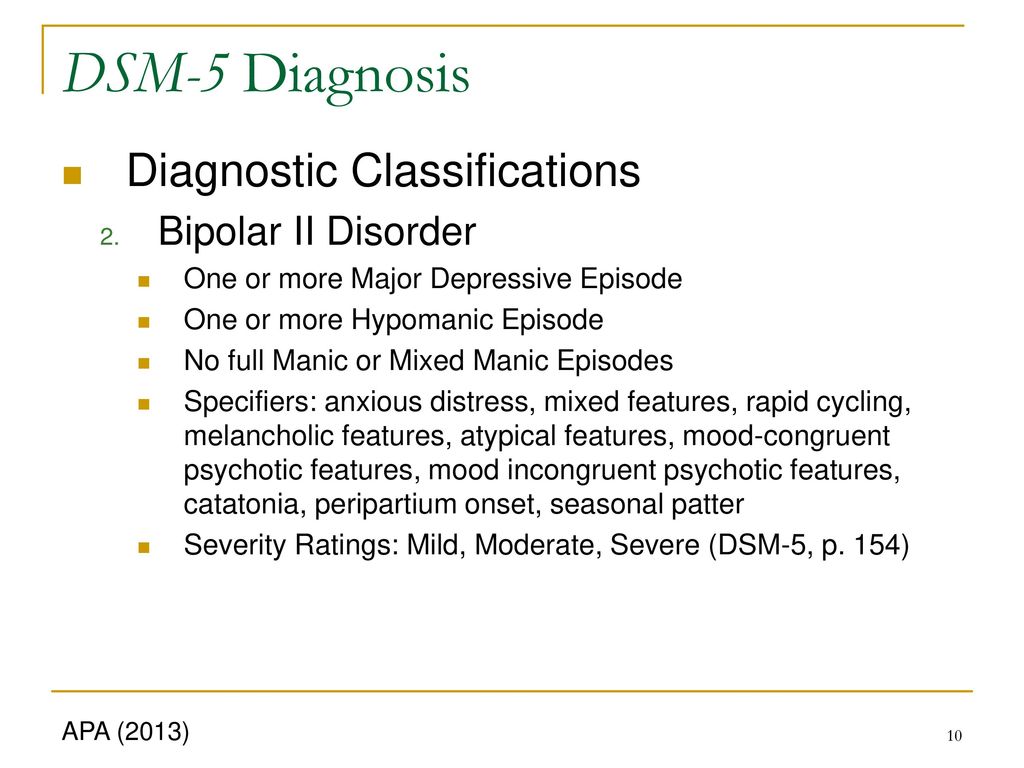
People often feel good during hypomania and seek medical help when they experience depression. For this reason, doctors often misdiagnose bipolar II as depression.
When making a diagnosis, a doctor will:
- ask about symptoms
- about family history
- perform a physical exam
- order tests, such as blood tests, to rule out other possible causes
Then, they use criteria from the Diagnostic and Statistical Manual of Mental Disorders to make a diagnosis.
The doctor may also use a checklist to identify hypomania.
Can Bipolar II Disorder Be Prevented?
The causes of bipolar disorder are not well understood. It’s not known if bipolar II disorder can be prevented entirely.
/when-your-your-loved-one-has-bipolar-disorder-5115269_final-ac91810fa53b49249830fd3ab718e406.jpg)
It is possible to reduce the risk of developing future episodes of hypomania or depression once bipolar disorder has developed. Regular therapy sessions with a psychologist or social worker, in combination with medication, can help efforts to stabilize mood, leading to fewer hospitalizations and feeling better overall. Psychotherapy can help people better recognize the warning signs of a developing relapse before it takes hold, and can also help to ensure that prescribed medicines are being taken properly.
Treatment
Treatment for bipolar II disorder usually involves a combination of medication and psychotherapy.
It is usually long-term and continuous. If a person stops treatment, symptoms can return, even when they feel well.
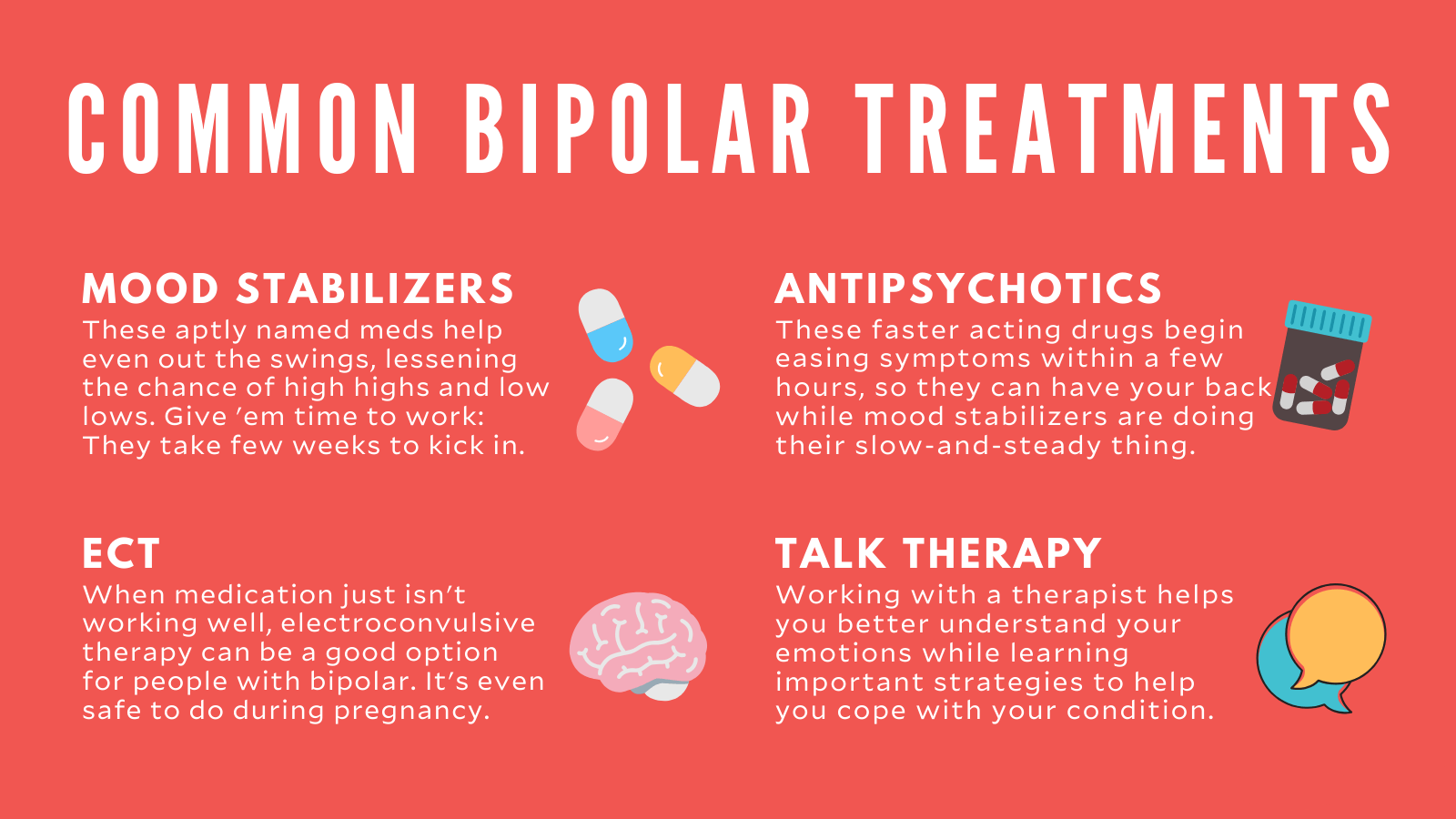
Medication
These may include:
- mood stabilizers
- antipsychotics
- antidepressants
- medications to help improve sleep quality
It can take time to find the best combination and dosage. A person may need to work with their doctor for some time before they arrive at a suitable solution.
Report any side effects to the doctor, to help them make the right adjustments. Trusted loved ones may also be able to offer helpful insight.
Psychotherapy and counseling
Talking through emotions and challenges associated with bipolar disorder can help.
The purpose of psychotherapy or counseling may be to:

- develop coping strategies for symptoms
- identify effective ways to manage stress
- point out triggers and ways of avoiding them
- educate the person about bipolar disorder
Some people have accompanying health problems, such as alcohol or drug use disorders. Treatment can help with these, too.
Lifestyle changes
Various strategies can help a person achieve more stable moods and a deeper sense of well-being, including:
- Exercise: A doctor can help develop an exercise plan to support stress management and overall health.
- Diet: A healthful, varied diet provides essential nutrients and boosts overall well-being.
- Sleep: Getting enough quality sleep regularly can help, and a consistent routine is important.
- Keep a log: Noting down mood changes and life events can help identify patterns and triggers.

While there is evidence rested sources that some supplements may help with mild to moderate symptoms, people with severe symptoms need to seek professional help. People may find that supplements help manage symptoms and prevent recurrences when they use them alongside conventional treatment.
Also Outlook
Symptoms of bipolar II disorder often appear in early adulthood.
The condition is lifelong, but a range of treatments can help manage it. It is essential to follow the doctor’s instructions — a person should not discontinue medication following the doctor’s instructor buns is essential are, it is essential to speak with a doctor first, as some supplements may interact with medications.
The disorder is a complex condition that can affect many aspects of a person’s life. Finding a trustworthy doctor and staying in regular contact with them can help.
Reference
https://www.webmd.com/bipolar-disorder/guide/bipolar-2-disorder












I agree with your point of view, your article has given me a lot of help and benefited me a lot. Thanks. Hope you continue to write such excellent articles.
Your article gave me a lot of inspiration, I hope you can explain your point of view in more detail, because I have some doubts, thank you.
Your article gave me a lot of inspiration, I hope you can explain your point of view in more detail, because I have some doubts, thank you.